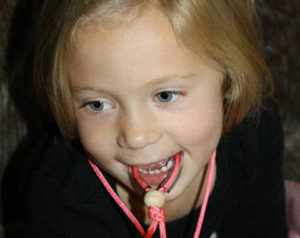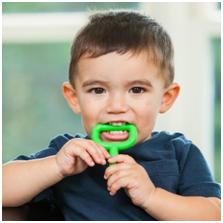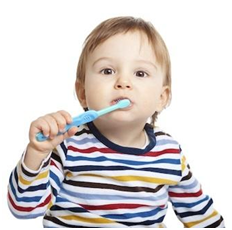
How to Stop Oral Fixation
The Importance of Breaking Oral Fixations and Oral Habits in Kids
Breaking the oral fixation in your child can be traumatic for them, because you are removing one of their primary sources of comfort – one that has been there, in some cases, since before birth. With origins at infancy or even in the womb, the sucking instinct in babies is as natural as bees making honey. Stresses of childhood development through the early childhood stages often result in urges for sucking fingers, biting nails, or gnawing on objects. The oral reflexes at certain ages are understood as natural and identify with normal development. These behaviors help us understand the child’s needs or complaints.
What is Oral Fixation?
An oral fixation can be defined as a strong urge to put something in the mouth. This can occur for many reasons, to pacify a complaint such as teething or a reflex to satisfy a feed such as hunger to to self soothe an emotional response. The oral fixation in kids can be a behavior like thumb sucking or nail biting.
When Do These Oral Behaviors Become a Problem?
A child will reach a point in their psychological development when these behaviors are no longer needed and should gradually disappear. The natural behavior will turn into a habit around the age of two. At this point, the oral habit may now interfere with the child’s social development and oral health. The young child will crave to put things in their mouth, to chew and suck on objects or fingers. If the oral habit persists after the second birthday and if it turns into an obsessive desire to place various objects in the mouth, then it is referred to as a normal fixation in kids.
What Causes Oral Fixation?
Oral fixation causes can be contributed by the placement of objects in the mouth stimulating nerves on the roof of the mouth, releasing endorphins and creating a positive feedback loop. The next questions become when and how to get rid of oral fixation. Specifically, what are the various ways to reduce oral fixation in children?
Most Common Oral Fixations in Kids
1.Thumb or finger sucking

Thumb sucking or finger sucking is common in children under the age of two. If the child rests their thumb passively in their mouth for short periods of time, and quits the habit around the age of three or four, there is very little chance of any long-term negative consequences or dental problems. On the other hand, active sucking, especially aggressive thumb sucking can develop malformations and or other problems that often need to be treated. These are common dental problems from thumb sucking:
- Crossbite – the upper row of teeth bite are narrower than the lower teeth.
- Open bite – the upper and lower teeth don’t touch when the mouth is closed.
- Narrowed upper jaw – The thumb has pushed the palate upwards, causing the narrowed jaw. Consequently, crooked teeth emerge.
- Speech problems – these malformations to the teeth and jaw make it harder for kids to pronounce certain sounds: s, z, t, d, l, n.
- Tongue thrusting – Children push the tongue forward, between the upper and lower front teeth, when swallowing.
- Frequent infections – Constantly having an “unclean” finger in the mouth can lead to sore throats, middle ear infections and many more similar problems that children face in the early stage.
2. Mouthing and chewing on objects

Young children explore their worlds by putting objects within reach in the mouth and chew on them. Gnawing on objects may soothe teething pain. Oral fixation for toddlers may may lead them putting things in their mouths if the texture is interesting to them or a way to grab your attention. Caution should be taken with any object smaller than a quarter as it may be a choking hazard for a child under the age of three.
3. Overusing pacifiers

The benefits of pacifiers have been recognized by the medical community for the reduction of Sudden Infant Death Syndrome (SIDS), and for pain relief in newborns and infants for special procedures needed. Prolonged use is cautioned for having a negative effect on breastfeeding and causing dental issues like crossbite, open bite, narrowed upper jaw, etc. and speech delays in older children. The pacifier should never be dipped in sugar, honey, or any other sweetener because it causes tooth decay. The general recommendation is to avoid using pacifiers after the second birthday. The AAPD recommends pacifiers over thumbs, since it is much easier to control pacifier use than to stop thumb sucking.
Particularly with prolonged use of pacifiers, there can be a negative effect on breastfeeding, dental malocclusion, and otitis media.
4. Nail biting (onychophagia)

Nail biting is the most dominant oral habit in children. Although there is no oral fixation treatment for kids, per se, anti-nail biting bitter nail polish can be a great answer to how to break an oral fixation habit. If your child bites their nails consciously or unconsciously, keeping the nails clean and making sure they wash their hands frequently is important. Have a nail kit handy so they can use a tool to keep the nail trim, helping to prevent biting them. If this activity leaves bloody or sore fingertips, or if you notice some other alarming behavior, talk to your pediatrician about it at your next visit or consider a finger guard.
5. Brushing too hard

Teach your kids how to brush their teeth properly every day. It is not easy as children aren’t always interested in brushing. They need to learn to brush their teeth twice a day with a soft bristle toothbrush using gentle strokes on the teeth and gums. Brushing too hard can damage teeth. Kids think they’ll have cleaner teeth or their teeth will become whiter if they brush aggressively. Teeth become even yellower and darker if they lose a transparent enamel layer. So, teach your kids to brush gently, twice a day for two minutes, moving the toothbrush smoothly up and down, or back and forth.
How to Break These Oral Fixation Habits?
If you’re asking yourself how to break oral fixation, there are alternatives depending on the age and severity of your child’s sucking habit. Find the best way to stop thumb sucking for your child.
Preventive therapy can be very efficient in breaking the oral habit.
- Observe to find the cause
- Talk to your child, explaining to them why they need to break this habit.
- Create a reward chart with a small reward for success.
- Positive reinforcement is absolutely the most effective way to change behavior.
The appliance therapy includes different types of appliances and devices to either interrupt the habit, eliminate it, or just serve as a reminder. The device you choose may depend on your child’s motivation or personal preference.
- The bluegrass or rake appliance – These are expensive devices installed in the child’s mouth to stop thumb sucking and end the damage from the finger sucking. The dental appliance can be installed by the dentist and worn for about one year.
- Plastic devices that cover the thumb – A moderate oral fixation solution. Since they have slits that allow air to pass through, they unable kids to create suctions. Still, they are likely to collect germs and often cause various infections that you have to deal with. Finally, they do not eliminate the habit, they just interrupt it.
- Thumb or finger gloves – Easy to use, however they are also easily removable, so the children can take them off. These are intended for an older child who just needs a reminder.
- Thumb or finger guards – Soft rubber devices that strap to the hand and cover the thumb or finger. Good in concept and some families have success, but they collect slobber and germs, make it difficult to use the hand during normal development, and can be difficult to put on and off throughout the day.
- Elbow guards – A good alternative that restricts thumb/finger sucking by limiting bending of the elbow. It is designed to interrupt the comfort associated with the habit by limiting insertion of the fingers into the mouth in the first place. The patented Nipit Hand Stopper is the only product that is specifically designed to break the oral fixation – not just finger sucking.
- Nail polish – For nail biting and light thumb suckers, bitter nail polish is a good deterrent, but there are a variety of options. For severe thumb suckers, bitter nail polish has a very low success rate and is not suggested. The traditional brush-on applicator is easiest and provides the fullest, most consistent coverage. Strength matters. Choose a strong formula that will immediately repel the subconscious behavior. Honest10 is the only bitter nail polish that is a complete solution on how to stop oral fixation, including a maximum strength formula that is safety tested, with nail care tools, and uses a motivational program. Instructions are easy to follow and you know what to expect.